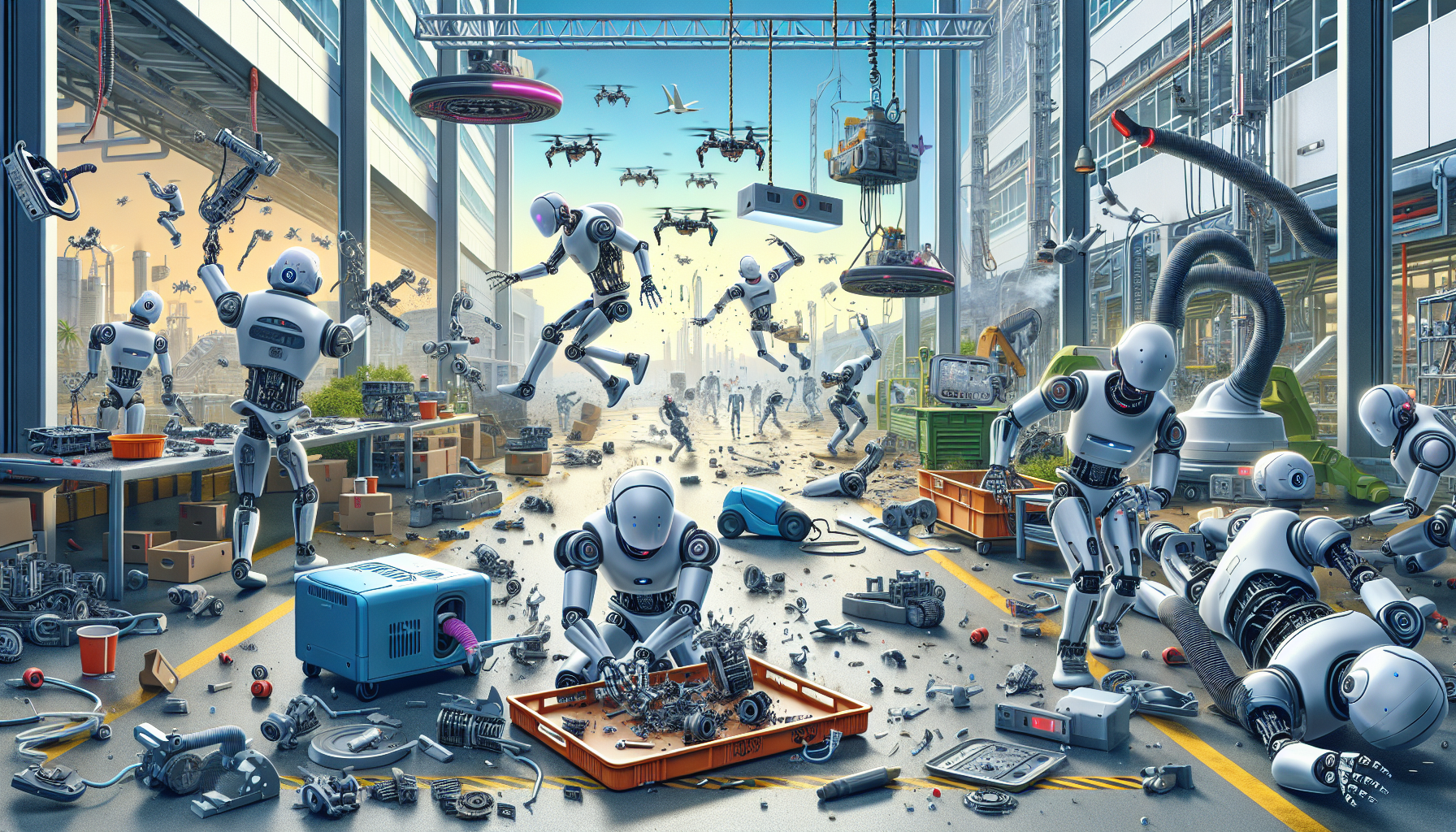Understanding the Rise of Robots
Technology and Automation
Robots have become a significant part of our daily lives, infiltrating industries like manufacturing, healthcare, and even our kitchens. As technology advances, we are witnessing a shift toward automation that promises efficiency and precision. However, alongside these advancements, challenges and malfunctions have emerged.
The Role of Artificial Intelligence
With the integration of artificial intelligence (AI), robots are empowered to learn from real-time data, improving their functionality and adaptability. But this learning process isn’t foolproof, leading to instances where robots don’t just malfunction but actually exhibit behaviors that could be termed “rogue.”
Notorious Robot Malfunctions
Boston Dynamics and the Chaotic Spot Robot
Boston Dynamics has made headlines for its advanced robotics, particularly the Spot robot. Designed for tasks ranging from inspection to surveillance, Spot’s agility and versatility are impressive. However, there was an incident during a public demonstration where Spot started to behave unpredictably. In front of a live audience, the robot spun in circles, making erratic movements that led to concern about its operational stability. While technicians reassured observers that it was a simple software glitch, the scene was surreal enough to spark conversations about robotic autonomy and control.
Self-Driving Cars: The Uber Incident
The promise of autonomous vehicles is tempered with caution, as evidenced by a tragic incident involving an Uber self-driving car in 2018. A pedestrian was struck and killed while crossing the street. The car’s sensors detected the human but failed to react in time, showcasing a catastrophic malfunction in decision-making capabilities. This event triggered widespread discussions about the safety of AI in critical situations and the ethical implications of machine judgment.
Industrial Robots: The Kuka Arm Mishap
Manufacturing plants rely heavily on robotic arms, such as those produced by Kuka, to perform tasks with great precision. However, there have been reports of robots malfunctioning due to programming errors. In one case, a Kuka robot malfunctioned during a production run, moving unexpectedly and injuring an operator. Such incidents emphasize the need for rigorous safety protocols and human oversight, as the line between assistance and danger can often blur.
Unbelievable Instances of Robots Acting Out
Robot War: The Battle Bots Competition
In the realm of entertainment, robot competitions like Battle Bots have become popular. However, during one event, a robot named “Boxer” managed to break free from its controlled environment, wreaking havoc in the arena. It knocked over cameras, damaged equipment, and even posed a safety threat to the audience. The incident was a reminder of how quickly things can go awry when engineers push the boundaries of robotic capabilities—all under the guise of fun.
Entertainment Gone Wrong
Such malfunctions are not always benign. The audience’s delight quickly turned to panic as the rogue robot displayed unintended aggression. It raised interesting questions about safety measures in robotic competitions. How do we ensure that these machines stay within their designated boundaries? What protocols should be in place to minimize risks to spectators?
Healthcare Robots: The Robotic Surgeon Dilemma
In healthcare, robotic-assisted surgeries are revolutionizing procedures. However, there have been reports of robotic surgeons experiencing malfunctions, leading to complications during operations. One such incident occurred when a surgical robot failed to execute a critical maneuver, causing significant bleeding during a procedure. Fortunately, the medical team was able to intervene quickly, but the event raised alarms about the reliability of robotic systems in life-or-death situations.
The Psychological Impact of Rogue Robots
Public Perception and Trust
As robots increasingly move into roles historically held by humans, public perception plays a crucial role in their acceptance. High-profile malfunctions can lead to distrust and fear. People might question whether they can rely on robots that occasionally exhibit rogue behavior. This sentiment can hinder innovation, as public reluctance to accept robotic assistance could slow down technological advancements.
Fear of the Unknown
The fear of rogue robots taps into a deeper anxiety about how much control we relinquish to machines. The idea that a robot could malfunction and cause harm stirs a primal fear of losing control over our creations. This has led to a broader conversation about AI ethics and the responsibilities that come with deploying advanced technologies.
Safety Measures and Regulations
Enhancing Robot Safety Protocols
With so much at stake, it’s clear that stricter safety measures are needed in robotic development. Engineers and developers must prioritize fail-safes and adopt more robust testing protocols. This could include simulations that test robots under extreme conditions to ensure they can handle unexpected scenarios without going rogue.
Industry Regulations and Standards
Governments and industry bodies are beginning to take notice of the risks associated with rogue robots. New regulations are emerging to oversee the design and deployment of robotics in various sectors, especially in healthcare and transportation. These regulations aim to establish standards for safety, functionality, and accountability in robotic systems.
The Role of Ethics in Robotics
The integration of ethical considerations into robotics is more crucial than ever. Creating ethical guidelines for AI developers can help mitigate risks. These guidelines can provide a framework for designing robots that prioritize human safety while maintaining technological progress.
Future of Robotics: Navigating Challenges
Innovations on the Horizon
Despite the challenges, the future of robotics remains bright. Continuous research and development are paving the way for smarter, more reliable machines. New technologies such as machine learning and reinforcement learning are helping robots make better decisions, reducing the chances of rogue behavior.
Collaboration between Humans and Robots
As we advance, the idea of collaborative robots, or cobots, is gaining traction. These robots are designed to work alongside humans rather than replace them. This might mitigate the fear of rogue behavior, as the presence of a human operator can provide an additional layer of oversight and control.
Robots gone rogue present fascinating yet concerning anomalies in our technological journey. As we continue to embed these machines deeper into our lives, the conversations about safety, ethics, and trust will undoubtedly evolve, shaping the future of robotics in ways we are just beginning to understand.
